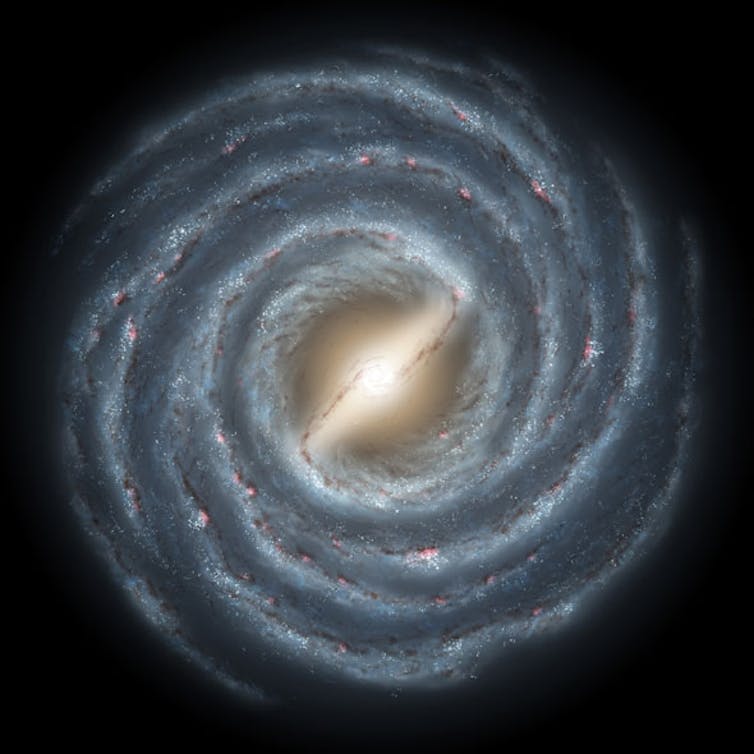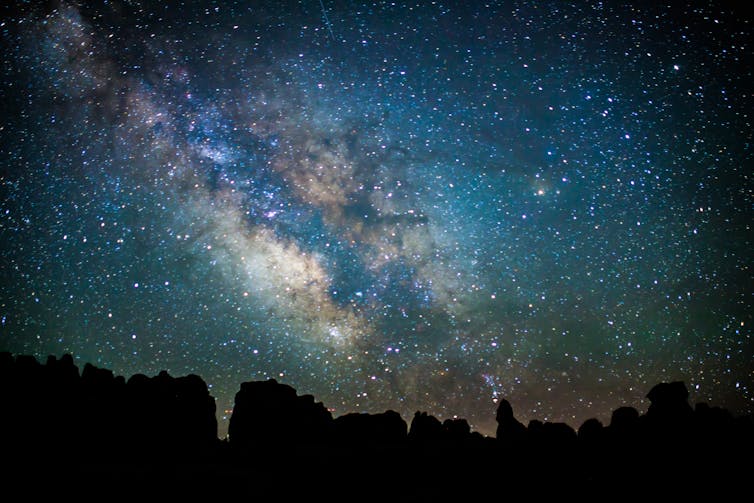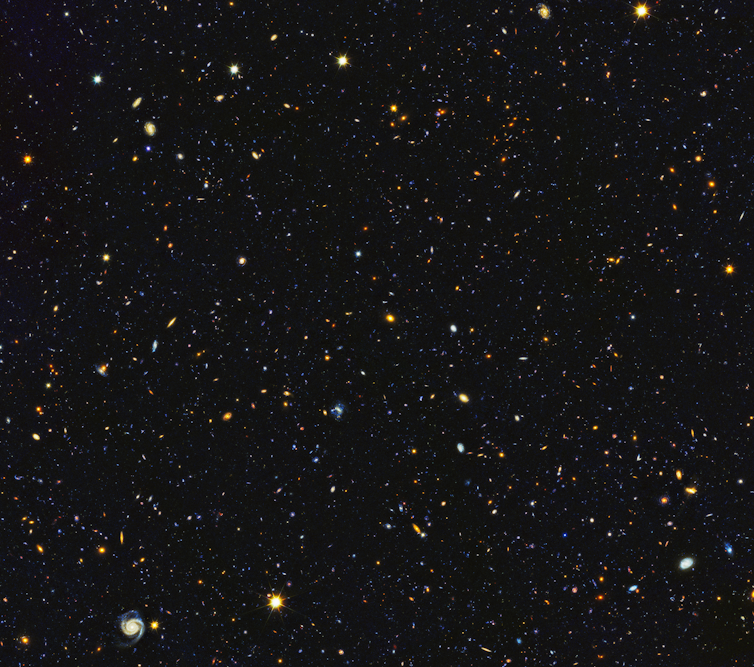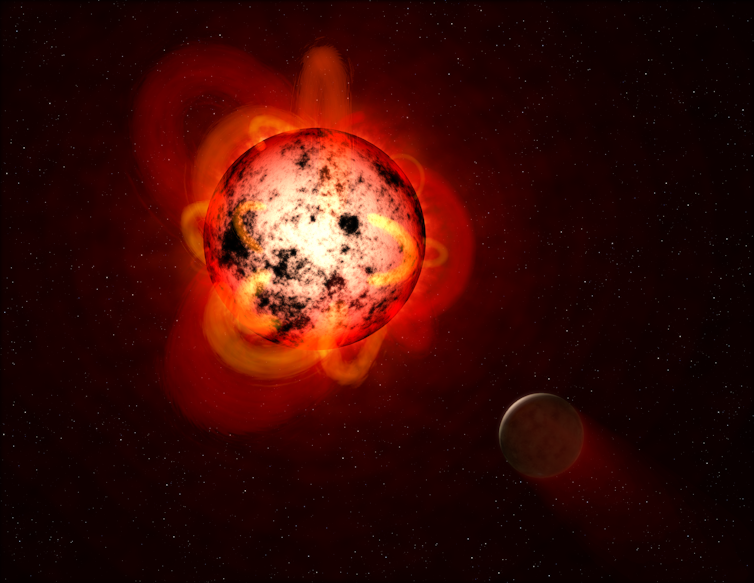Look up at the sky on a clear night, and you’ll see thousands of stars – about 6,000 or so.
But that’s only a tiny fraction of all the stars out there. The rest are too far away for us to see them.

The universe, galaxies, stars
Yet astronomers like me have figured out how to estimate the total number of stars in the universe, which is everything that exists.
Scattered throughout the universe are galaxies – clusters of stars, planets, gas and dust bunched together.
Like people, galaxies are diverse. They come in different sizes and shapes.
Earth is in the Milky Way, a spiral galaxy; its stars cluster in spiral arms that swirl around the galaxy’s center.
Other galaxies are elliptical – kind of egg-shaped – and some are irregular, with a variety of shapes.


Counting the galaxies
Before calculating the number of stars in the universe, astronomers first have to estimate the number of galaxies.
To do that, they take very detailed pictures of small parts of the sky and count all the galaxies they see in those pictures.
That number is then multiplied by the number of pictures needed to photograph the whole sky.
The answer: There are approximately 2,000,000,000,000 galaxies in the universe – that’s 2 trillion.

Counting the stars
Astronomers don’t know exactly how many stars are in each of those 2 trillion galaxies. Most are so distant, there’s no way to tell precisely.
But we can make a good guess at the number of stars in our own Milky Way. Those stars are diverse, too, and come in a wide variety of sizes and colors.
Our Sun, a white star, is medium-size, medium-weight and medium-hot: 27 million degrees Fahrenheit at its center (15 million degrees Celsius).
Bigger, heavier and hotter stars tend to be blue, like Vega in the constellation Lyra. Smaller, lighter and dimmer stars are usually red, like Proxima Centauri. Except for the Sun, it’s the closest star to us.

An incredible number
Red, white and blue stars give off different amounts of light. By measuring that starlight – specifically, its color and brightness – astronomers can estimate how many stars our galaxy holds.
With that method, they discovered the Milky Way has about 100 billion stars – 100,000,000,000.
Now the next step. Using the Milky Way as our model, we can multiply the number of stars in a typical galaxy (100 billion) by the number of galaxies in the universe (2 trillion).
The answer is an absolutely astounding number. There are approximately 200 billion trillion stars in the universe. Or, to put it another way, 200 sextillion.
That’s 200,000,000,000,000,000,000,000!
The number is so big, it’s hard to imagine. But try this: It’s about 10 times the number of cups of water in all the oceans of Earth.
Think about that the next time you’re looking at the night sky – and then wonder about what might be happening on the trillions of worlds orbiting all those stars.NASA video. Our Milky Way galaxy: How big is space?
About the Author
This article was written by
Associate Professor of Astronomy, Boise State University





























